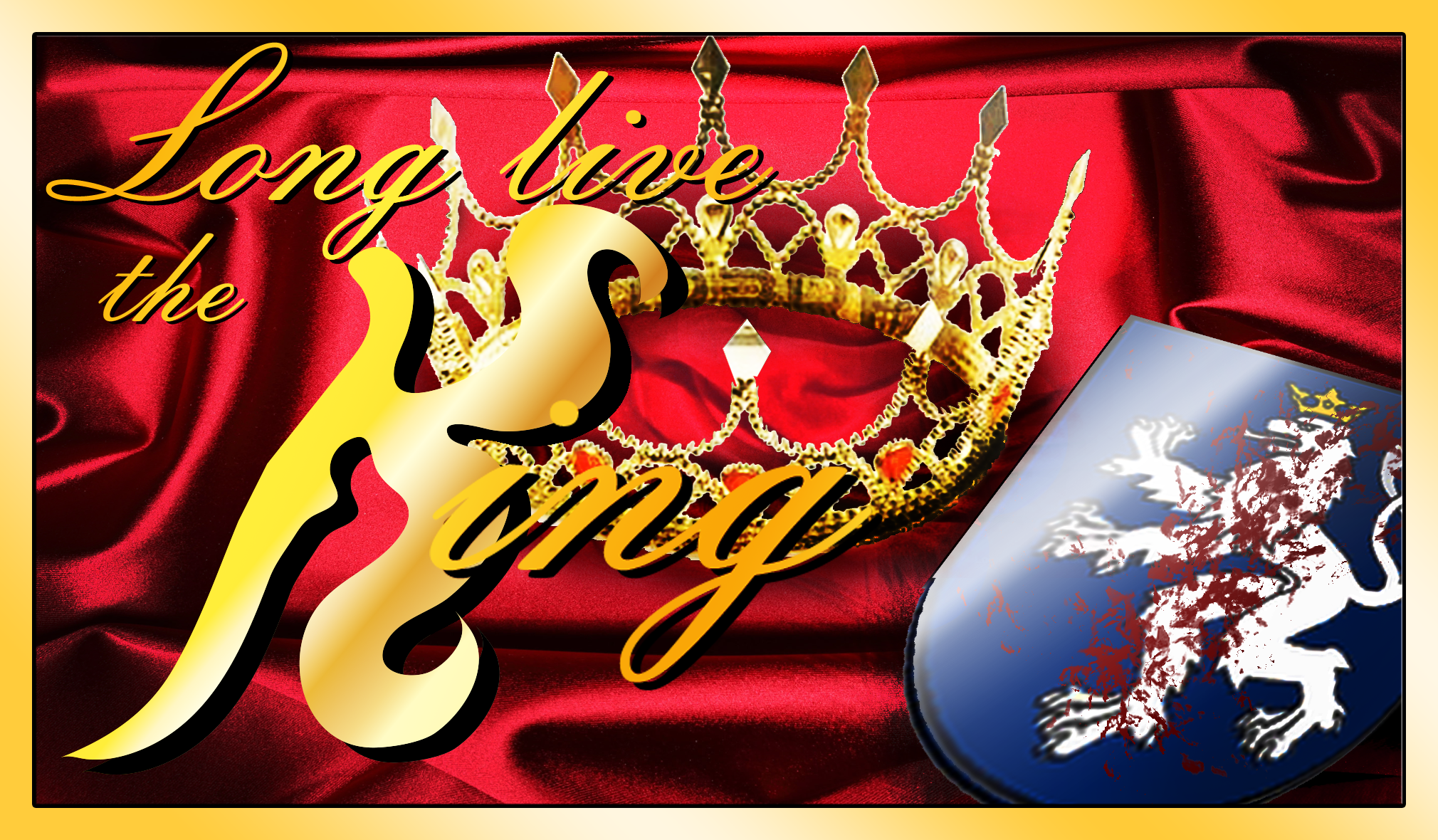Long Live The King Mac OS
- The MacBook Air lives to fight another day, thanks to its mainstream price and long battery life, but this classic laptop is definitely in its twilight. $2,489.96 at eBay Apple MacBook Pro 15-inch.
- EWorld Is Where I Wanna Be. I remember when I got my first computer, ever, at the age of 24. It was a Macintosh Performa 638CD, and it came with this sweet little 14.4 baud modem that was my.
- Dune 2000: Long Live the Fighters! - A computer game, real-time strategy game released by Westwood Studios in 1998. The game is a continuation of Dune II on a game engine similar to the Westwood Command & Conquer: Red Alert engine.The game takes place on the planet Arrakis with three warring.
'The king is dead, long live the king!',[1] or simply 'long live the king!' is a traditional proclamation made following the accession of a new monarch in various countries. The seemingly contradictory phrase simultaneously announces the death of the previous monarch and assures the public of continuity by saluting the new monarch.[2]
Among the most noticeable moves was a re-branding of Apple's oldest remaining software offering: the Macintosh operating system. Known for the last 15 years as 'OS X,' the operating system that helped drive Apple's resurgence in the early 2000s will now be known as 'macOS.'
In modern times, this phrase has become a popular phrasal template. Given the memorable nature of the phrase (owing to epanalepsis), as well as its historic significance, the phrase crops up regularly as a headline for articles, editorials, or advertisements on themes of succession or replacement. Robert Cecil, one of the architects of the League of Nations, famously concluded his speech at the final session of the League of Nations with the phrase: 'The League is dead. Long live the United Nations.'[3]
Origin[edit]
The original phrase was translated from the French: Le roi est mort, vive le roi!, which was first declared upon the accession to the French throne of Charles VII after the death of his father Charles VI in 1422. In France, the declaration was traditionally made by the duc d'Uzès, a senior peer of France, as soon as the coffin containing the remains of the previous king descended into the vault of Saint Denis Basilica. The phrase arose from the law of le mort saisit le vif—that the transfer of sovereignty occurs instantaneously upon the moment of death of the previous monarch. 'The King is dead' is the announcement of a monarch who has just died. 'Long live The King!' refers to the heir who immediately succeeds to a throne upon the death of the preceding monarch.
At the time, French was the primary language of the nobility in England, and the proclamation was quickly taken up as ideally representing the same tradition—which in England dates back to 1272, when Henry III died while his son, Edward I, was fighting in the Crusades. To avoid any chance of a civil war erupting over the order of succession, the Royal Council proclaimed: 'The throne shall never be empty; the country shall never be without a monarch.' Thus, Edward was declared king immediately, and he reigned in absentia until news of his father's death reached him and he returned to England. Another example is among the French royalty. In France, Louis XV was the predecessor of Louis XVI. Upon Louis XV's death at around 11:00 pm on 10 May 1774, heir-apparent Louis-Auguste, le Dauphin, immediately became King Louis XVI of France. This quick transition of sovereignty was made within the phrase 'the king is dead, long live the king!'
What Is The Latest Mac Os
Usage[edit]
In Denmark, the prime minister makes a similar proclamation upon the death of a monarch—Kongen leve, kongen er død (hail the king, the king is dead)—from the balcony of Christiansborg Palace (the Danish Parliament building).[4] This declaration is official and marks the ascension of a new monarch immediately after the death of the old. This is because Frederick III abolished the coronation ceremony with the introduction of the hereditary and absolute monarchy in 1660. The king was now supreme and accountable only to God, so the crown became a birthright, and not something to be bestowed only after the father's death with the nobles and the church's approval. With the introduction of constitutional monarchy in 1849, the monarch's power over the State was again limited, but his claim to the throne remained undisputed and absolute.
In some monarchies, such as the United Kingdom, an interregnum is usually avoided by using the idea of immediate transferral of power behind the phrase (i.e., the heir to the throne becomes a new monarch immediately on his predecessor's death). This famous phrase signifies the continuity of sovereignty, attached to a personal form of power named Auctoritas. This is not so in some other monarchies where the new monarch's reign begins only with coronation or some other formal or traditional event. In the Polish–Lithuanian Commonwealth for instance, kings were elected, which often led to relatively long interregna. During that time it was the Polish primate who served as an interrex (ruler between kings). Ernst Kantorowicz's famous theory of the king's two bodies (1957) showed how auctoritas (Kantorowicz used the synonym term—here—of dignitas) was transferred from the defunct sovereign to the new one.
In the United Kingdom and other realms which permit female succession to the throne, the phrase can be altered to accommodate succession between monarchs of different sexes, e.g. 'The King is dead, long live The Queen!', as happened in 1952, when King George VI died and was succeeded by his daughter, Queen Elizabeth II, or 'The Queen is dead, long live The King!' as happened in 1901, when Queen Victoria was succeeded by her son, King Edward VII.[5] 'The King is dead, long live The King!' was last properly used in the United Kingdom in January 1936 when King George V was succeeded by his son King Edward VIII, who later abdicated, or 'The Queen is dead, long live The Queen!' as happened in 1558, when Queen Mary I was succeeded by her half-sister, Queen Elizabeth I.
In the Kingdom of Thailand, to conclude the national televised address on October 13, 2016, regarding the passing of His Majesty King Bhumibol Adulyadej, the Prime Minister proclaimed 'His Majesty King Bhumibol Adulyadej, Rama IX, has passed away. Long live His Majesty the new King.'[6]
See also[edit]
- Ten thousand years, a similar East Asian saying, used to wish for long life of the Emperor
- Mabuhay, a traditional Philippine cheer meaning 'May you live long!'
- Sto lat, a similar Polish phrase and song meaning 'one hundred years'
- Mnohaya lita, '(God grant you) many years' (Ukrainian)
References[edit]
- ^The exact punctuation used when written varies from source to source, with the full stop on occasion being replaced by a semicolon, a colon, or a dash.
- ^Ryken, Philip Graham (2011). King Solomon: The Temptations of Money, Sex, and Power. Crossway. p. 18. ISBN978-1-4335-2154-6.
- ^Scott, George (1973). The Rise and Fall of the League of Nations. Hutchinson & Co LTD. ISBN0-09-117040-0.
- ^Kongen leve, kongen er død. Den Store Danske.
- ^'February 6, 1952 Toronto Telegram'. Paper Trail. Retrieved 2 December 2018.
- ^Statement by Prime Minister General Prayut Chan-o-cha after the announcement of Royal Household Bureau. Royal Thai Government.
There is an approximate time-line for almost every Mac OS X;
with a few exceptions. The longest lag between new versions
may have been the time between Panther and Leopard (Tiger)
as that also was a very refined version due to many updates...
Mar 24, 2016 - Learn which OS X versions and builds originally shipped with
or are available for your ... iMac, Date introduced, Original Mac OS X included
This may not answer your question; while there are a few other Support
articles that had covered approximate dates of inception, MacTracker.ca
application has a software section that has dates for each OS X. Also a
few pages in EveryMac.com likely has some information. ~Wikipedia?
Jump to Release history - ... support, Kernel, Date announced, Release date, Most

recent version ... Tiger did not support 64-bit GUI applications, only 64-bit CLI app-
lications. ... With the exception of Mac OS X Server 1.0 and the original public beta,
OS X ... Prior to its release, version 10.0 was code named 'Cheetah' ...
OS X El Capitan · History of OS X · OS X Yosemite · OS X Mavericks
+Older articles from third-party sites, suggest about five years including
supported updates from Apple. Subject to change (& more recent fact)
Long Live The King Manhua

So there is some information out there on this topic.
Good luck & happy computing! 🙂
New Mac Os 11
Sep 4, 2016 3:40 PM